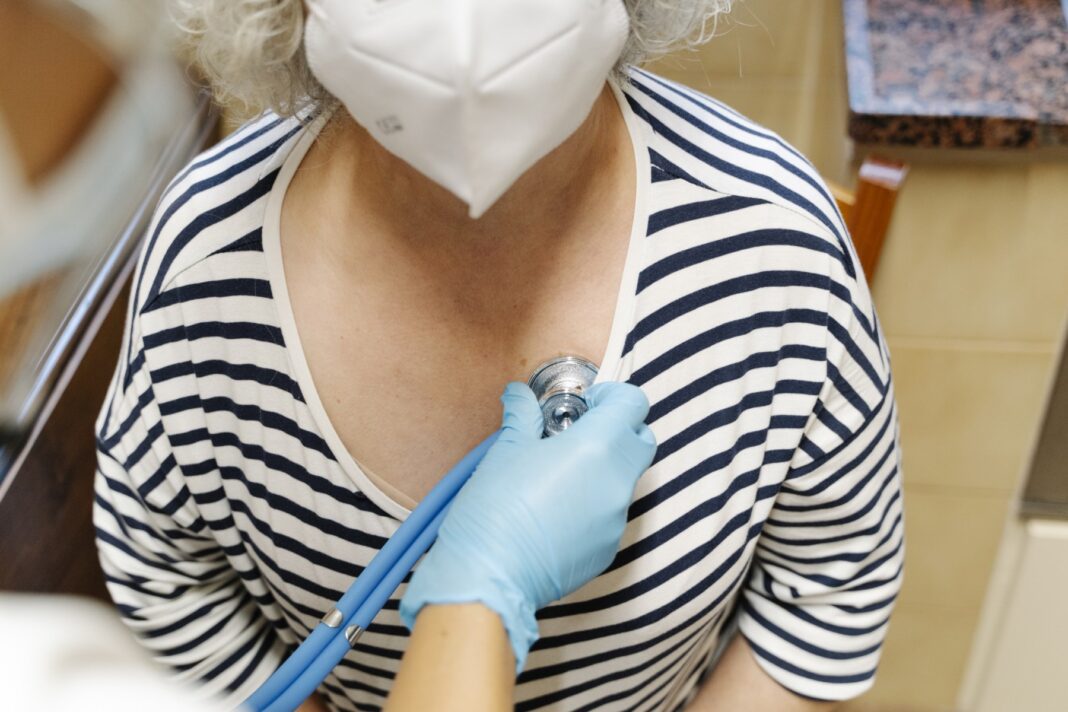A new drug shows promise in providing relief to hypertrophic cardiomyopathy patients experiencing shortness of breath, according to late-breaking research presented today at the American College of Cardiology (ACC) Scientific Session in Washington, D.C.
Florian Rader, MD, MSc, associate professor of Cardiology and medical director of the Hypertension Center in the Smidt Heart Institute at Cedars-Sinai, presented results of an international clinical trial that shows the drug, mavacamten, alleviated the shortness of breath in patients with obstructive hypertrophic cardiomyopathy.
The genetic condition causes thickening of the heart muscle, and as a result, heart muscle cells enlarge and scarring often develops between cells. Patients with the condition typically experience shortness of breath, chest pressure, irregular heartbeat, and, although rare, sudden cardiac arrest.
“Until now, existing treatments for hypertrophic cardiomyopathy have been suboptimal, leaving most patients symptomatic and often, in need of invasive or even open-heart surgery,” said Rader, who served as site principal investigator of the clinical trial at Cedars-Sinai and lead author of the ACC late-breaking abstract. “Follow-up data from this extended clinical trial shows success in lessening the obstruction to blood flow out of the heart in hypertrophic cardiomyopathy. Along with this relief of obstruction came substantial improvements in symptoms and an important heart failure blood biomarker.”
As Rader, also co-director of the Hypertrophic Cardiomyopathy Clinic at Cedars-Sinai, explained in the late-breaking presentation, mavacamten showed preliminary success in relieving symptoms associated with the condition—specifically shortness of breath, which can be debilitating for hypertrophic cardiomyopathy patients.
Key data from the clinical trial—shared by Rader at ACC22—includes:
· The average age of the 231 clinical trial participants was 60 years old, and 39% of those on the trial were female. The median follow-up was 62 weeks.
· 69% of trial participants had improved shortness of breath after 48 weeks of treatment.
· Treatment with mavacamten was generally well tolerated, and no new safety concerns were raised during longer-term follow-up.
Since the condition was first described some 60 years ago, Rader says no disease-specific targeted treatment options have been developed.
While the prevalence of hypertrophic cardiomyopathy is roughly 1 in every 200 patients, Rader says the condition is thought to be widely underdiagnosed.
“A lot of patients have the condition—and often feel short of breath or palpitations—but their doctor doesn’t recognize these symptoms as stemming from hypertrophic cardiomyopathy,” said Rader. “Instead, patients may be told by their physician they are out of shape, need to lose weight or are suffering from an anxiety condition.”
The correct approach, Rader says, is to first pay close attention to the patient’s symptoms. If shortness of breath is a main concern, then a doctor should listen to the patient’s heart for a murmur, then follow up with an electrocardiogram, and, ultimately, an echocardiogram, which most often will lead to the correct diagnosis.
Christine M. Albert, MD, MPH, professor, chair of the Department of Cardiology and the Lee and Harold Kapelovitz Distinguished Chair in Cardiology, says this treatment option is specifically designed for hypertrophic cardiomyopathy—a welcome change for patients who have suffered for years.
“This is the largest and longest report of mavacamten in patients with hypertrophic cardiomyopathy,” said Albert, who is also participating at ACC. “We are encouraged to learn that it once again proved safe and effective. We are excited to be at the forefront of bringing this investigational treatment to patients.”
The drug was developed by Bristol Myers Squibb and is under consideration for approval by the U.S. Food and Drug Administration.


